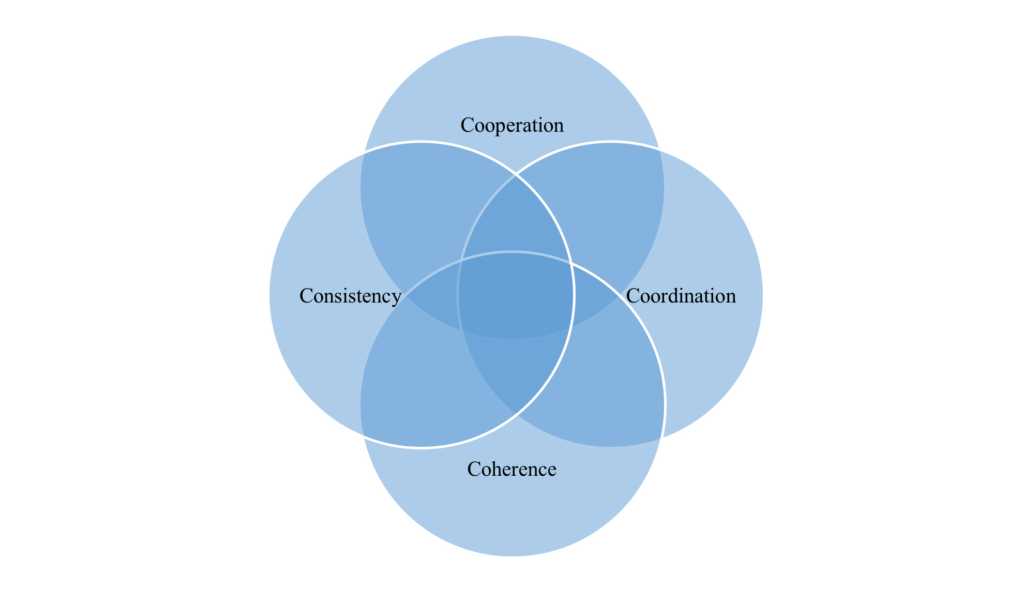Leonardo Badea (BNR): The matrix of the 4Cs for increasing the efficiency of measures for the sustainable development of the economy

It is obvious that society follows its dynamics of increasing the complexity of phenomena and processes, which directly affects the development models of the economy, and its sustainable development is an increasingly urgent necessity, which can no longer be postponed or kept at the bottom of the priority list. For a long time the idea of economic development under any conditions was acceptable, but in today’s situation where society needs as much cooperation and not just competition, this idea no longer represents an optimal choice. Precisely because we understand that the development of the economy has as its final goal the sustainable increase in the quality of life of citizens, it becomes necessary to circumscribe our actions and policies to this basic idea.
If instead we want to relate our actions to the current needs of society, one of the possible approaches to make the actions associated with this endeavor more efficient is to adopt a model based on the matrix of the 4Cs: cooperation, coordination, coherence, and consistency. Pursuing these four criteria to be met by the components of the economic policy mix, especially in the case of key areas (e.g. environment, climate change, agriculture, energy, transport, R&D and innovation activities, etc.), as well as identifying the interdependencies between the risks related to the relevant sectors can significantly contribute to increasing the degree of development and integration of economic projects based on ecological and sustainable development.
An analysis of how this matrix works in the phases of the decision-making process of a project and its budgeting to achieve the proposed objectives entails the definition of two important components:
• A first component classified as level 1 is related to the tactical and strategic organizational expression in terms of the use of human resources and the necessary levers by the national and international institutions involved in the development of the effective measures and their implementation. It is mainly about the cooperation and coordination of the necessary actions, in order to be able to have consistency and optimal results in relation to the assumed targets.
• A second component classified as level 2 is related to the dimensioning of the effort and the maximization of results by the nature of the programs assumed in the short, medium, and long term, which must allow the printing of a clear direction of development, based on a roadmap that includes the stage objectives that must be achieved.
Policy coherence essentially refers to interactions at different levels, as well as the alignment and consistency of objectives and tools/methods applied in the respective policy area. Effectively, the situation of “conflict” between the objectives of a certain policy and the actions undertaken in other fields must be avoided. So, it is not just a question of controlling potential conflicts, but in fact there is a need for consolidation actions through which policies in various fields support and reinforce each other. However, this can only be achieved through cooperation and coordination.
“THE MATRIX OF THE 4Cs” in policy making/implementation
| Level 1 | |
| COOPERATION Aims to establish common actions in the medium and long termIt is the first step of strategic decisions that must be taken respecting the principles of good governanceEstablish a necessary financial envelopeIt does not involve hierarchical relationships | COORDINATION Seeks to implement the established and assumed actionsThe principle of efficiency is the basis of all actionsIt manifests itself throughout the decision-making cycleTracks the use of allocated fundsIt also involves hierarchical relationships |
| It manifests itself both nationally and internationally. It starts from the need to reduce identified and defined risks. | |
| Level 2 | |
| COHERENCE Ensures that the adopted plans and decisions are aimed at achieving the assumed objectivesPursues the elimination of inconsistencies and discrepancies to create synergies between policies/measuresIt leads to the increase of cooperation efficiency | CONSISTENCY It is closely related to coherenceIt is obtained by maintaining unity in concepts, methodologies, policiesIt is necessary to ensure compatibility and a uniform approach, so that the implementation of measures/policies is effective, without generating conflicts in interpretationConsistency of procedures and policies must take into account a number of aspects:potential difficulties, problem areassetting realistic expectationssolid documentationimpactAims to analyze the quality and impact of the measures adopted |
However, these levels are not independent, they act and interact with moments of interference that can be:
• moments of partial interference, in the situation where two or three components intersect through their actions
• and moments of total interference where all components intersect.
The optimal approach is the one that leads to a moment of total interference, with the observed result being an integration of all the actions undertaken within the mix of economic policies to achieve the defined objective, also determining the maximum efficient use of the allocated financial resources.
The use of the 4C matrix in the design of the public policy mix

Both in the professional and the research environment, the debates and analyzes regarding the interactions between the different components of the economic policy mix are extensive and multifaceted. Each component of the mix has defined objectives and has specific tools, but the whole construction is dynamic, adaptable to the constantly changing economic and social conditions.
Although in theory and in practice the usefulness and efficiency of separating the objectives and the independence of the instruments related to the respective policies are recognized, at the same time numerous direct and indirect effects that the use of some of the instruments circumscribed to each of the policies can have on the objectives and conduct of the others are identified and documented. For this pragmatic reason, it is vital not to lose sight of the importance of coordination and cooperation within the policy mix. Thus, the possible unwanted side effects generated by some actions circumscribed to a certain economic policy can be counteracted by increasing the efficiency of the set of adopted measures, reducing the time of implementation and propagation of the beneficial effects and at the same time enhancing it.
It is known that the negative externalities generated by the activation of specific instruments circumscribed to a certain economic policy on other areas or sectors of the economy are often unavoidable. If we want to create a society with a high quality of life, it is mandatory not to give up the objectives related to the development of an eco-friendly environment in all phases of the production and distribution processes.
Precisely in order to optimally channel the desired effects and manage as efficiently as possible (minimizing) the inevitable negative externalities of using distinct instruments specific to each of the components of the economic policy mix, the approach based on the 4C matrix is useful.
Thus, the construction of a mix to simultaneously address the need for coordination, cooperation, coherence, and consistency of the components of economic policies would lead to the optimization of the result obtained for the economy and society as a whole. Collaboration drives the need to consider the demands, needs, and expectations of all involved, to ensure that economic policy decisions are based on a deep understanding of the current state as well as the perspectives of the economy. Coordination is about ensuring that different policies and measures work together seamlessly to achieve the desired results. Coherence helps to ensure the alignment of policies and specific measures, both with each other and with the wider economic and social objectives, especially the long-term ones. Consistency is mainly about ensuring that policies and measures are applied uniformly over time without significant changes that could have destabilizing effects on the development of society.
It should also be borne in mind that in the economic field a “one-size-fits-all” approach rarely works. Adapting to local conditions, to the particularities of national economies, enhancing strengths, is crucial for the successful implementation of policies and for achieving results in the medium and long term. Countries present particularities in terms of institutions and governance, economic development, openness to foreign investors, and these particularities, projected against the background of the economic conjuncture that characterizes the environment at a certain moment, significantly influence the implementation of economic policy.
The arguments presented above lead to the conclusion that the 4Cs – collaboration, coordination, coherence, and consistency – are essential principles that must underpin the construction of the economic policy mix to maximize benefits for society. The effort of such a construction is not small, and the obstacles are numerous, but the current particularly difficult conditions as well as the environment dominated by uncertainty, vulnerabilities, and risks emphasize the need for such an approach, which allows the maximum efficient use of increasingly rare and more expensive resources and of the ever narrowing policy space. This approach seeks to draw attention to a very important fact, namely, how the human resource, the intellectual capital integrates into the decision-making process in the short, medium, and long term, precisely to determine that projects that look good on paper can be transposed with concrete and quick results in the economic development of society. As Robert Shiller (Finance and the Good Society, 2012) said, ”the key to achieving our goals and enhancing human values is to maintain and continually improve a democratic financial system that takes account of the diversity of human motives and drives”.














